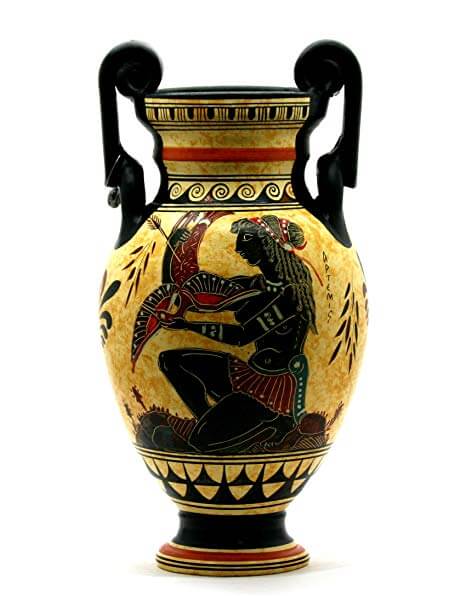How The Greeks Made Pottery
The ancient Greeks were one of the first known civilisations to take the art of pottery and completely refine it. Greek pottery pieces have been dated back to between c. 1000 to c. 400 BCE, and to this day have some of the most distinctive shapes, markings and finishes of any ancient pottery found.
Pottery pieces were an important part of history for these people thanks to their durability and lack of appeal to treasure-hunting thieves, which has in turn made them an essential tool for archaeologists looking to uncover the chronology of the area. The majority of ancient Greek pottery pieces are now housed in museums across the globe, but as with all commonplace historical artefacts, more are continuously being unearthed.
Keramos and Keirameikos
Greeks used a clay by the name of keramos to produce their pottery, which they called kerameikos. Keramos clay was widely available throughout Greece, and its most sought-after variation was Attic clay. Attic clay contained a high proportion of iron, giving it a reddish orange hue and a slight sheen when fired and finished. Ancient Greeks prepared and refined their clay in huge settling tanks so that different consistencies could be achieved, depending on the vessel that needed to be created from it.
Greek pottery was typically made on a potter’s wheel and created in separate, horizontal sections. The foot was made first, followed by the lower body, the upper body, the neck, and the handles. These sections were joined using clay ‘slips’ after drying. Each and every vase created during the reign of the ancient Greeks was unique, as these people favoured the use of decorative tools instead of uniform template.
Decoration and Firing Techniques
Pots were decorated before being fired several times in the same kiln. The decoration process largely depended on popular styles at the time, but common methods included painting pots with a black adhesive paint and a fine brush, adhering the paint with a fixative of vinegar or urine, and then firing the pottery pieces to adhere the final touches. The technology of the period couldn’t be more different to our modern world of smartphones and the top 5 roulette games for Aussies. Another, rarer technique involved covering a vessel in white clay paint, and then adding lines or figures in a thicker black paint with a stiff brush or a feather. This created a subtle relief effect, after which fine details were added with thinner paints of various colours.
Finishing Touches
Once decorated, pottery was fired in a kiln at roughly 960 °C. This relatively low temperature created the soft texture of Greek pots. Pots were fired several times in most cases, which brought out their finishes and colouring. The first firing involved an oxidising fire to ensure that the red colour of the clay appeared, and the second firing involved an oxygen-starved kiln by adding damp wood or water to the fire. This ensured that the pottery’s colours – particularly the darker tones – adhered correctly. A properly timed third firing further enhanced the colour of the clay and created a strong final finish that would stand the test of time.

